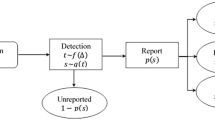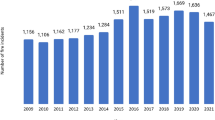Abstract
The Get-Alarmed Campaign Follow-up Study was the second phase of an initiative to assure that homes of families at high risk of fire-related injury and death had functioning smoke alarms. Smoke alarms and/or batteries were installed in over 94 percent of 454 participating households in Schley and Henry Counties, Georgia, in 2000. Before the study began, 60.6 percent of these homes had smoke alarms, but only 36.6 percent had functioning smoke alarms. The follow-up study was designed to determine the experiences of participants with smoke alarms and whether participating households had functioning smoke alarms a year after baseline. Participants were phoned or visited and asked about their experiences with smoke alarms since the baseline study. During the interview, they were asked to test a smoke alarm, the results of which could frequently be heard. Respondents included 237 from Schley County and 113 from Henry County, for an overall 77.1 percent response rate. While 80.3 percent of respondents had a smoke alarm that was heard by the interviewer when it was tested, 6.6 percent reported that their smoke alarm had been disabled or had a dead battery. Over 75 percent of respondents had smoke alarm sound offs in the prior year, predominately due to cooking smoke, but only about 5 percent reported removing the battery or otherwise disabling it to prevent sound offs. However, the measures taken may render a household unprotected at a critical time. Efforts to increase protection with smoke alarms should be augmented with programs to insure adequate and timely testing and maintenance of existing smoke alarms.
Similar content being viewed by others
REFERENCES
Karter, MJ. Fire loss in the United States During 2000. National Fire Protection Association 2001; 1–42.
NFPA Fact Sheets: Smoke alarms—Make them work for your safety. 2001; accessed at www.NFPA/org on February 3, 2003.
Harvey, PA, Sacks, JJ, Ryan, GW, Bender, PF. Residential smoke alarms and fire escape plans. Pub Health Reports 1998; 113:459-464.
McKnight, RH, Struttmann, TW, Mays, JR. Finding homes without smoke detectors: One step in planning burn prevention programs. J Burn Care Rehabil 1995; 16:548-556.
Douglas, MR, Mallonee, S, Istre, GR. Comparison of community based smoke detector distribution methods in an urban community. Injury Prevention 1998; 4:28-32.
Shaw, KN, McCormick, MC, Kustra, SL, Ruddy, RM, Casey, RD. Correlates of reported smoke detector usage in an inner-city population: Participants in a smoke detector give-away program. Am J Public Health 1988; 78:650-653.
Jones, AR, Thompson, CJ, Davis, MK. Smoke alarm ownership and installation: A comparison of a rural and a suburban community in Georgia. J Community Health 2001; 26:307-329.
Douglas, MR, Mallonee, S, Istre, GR. Estimating the proportion of homes with functioning smoke alarms: A comparison of telephone survey and household survey results. Am J Public Health 1999; 89:1112-1114.
Mickalide, A, Validzic, A. Smoke alarm maintenance in low-income families. Am J Public Health 1999; 89:1584-5.
Shults, RA, Sacks, JJ, Briske, LA, Dickey, PH, Kinde, MR, Mallonee, S, Douglas, MR. Evaluation of three smoke detector promotion programs. Am J Prev Med 1998; 15:165-71.
Dean, AG, Dean, JA, Coulombier, D et al. Epi Info, Version 6.02: A word processing, database, and statistics program for epidemiology on microcomputers. Atlanta, GA: Centers for Disease Control and Prevention, 1994.
Deaths resulting from residential fires and the prevalence of smoke alarms—United States, 1991–1995. Morbidity and Mortality Weekly Report 1998; 47:803-806.
Author information
Authors and Affiliations
Rights and permissions
About this article
Cite this article
Thompson, C.J., Jones, A.R., Davis, M.K. et al. Do Smoke Alarms Still Function a Year After Installation? A Follow-Up of the Get-Alarmed Campaign. Journal of Community Health 29, 171–181 (2004). https://doi.org/10.1023/B:JOHE.0000016720.38681.61
Issue Date:
DOI: https://doi.org/10.1023/B:JOHE.0000016720.38681.61




